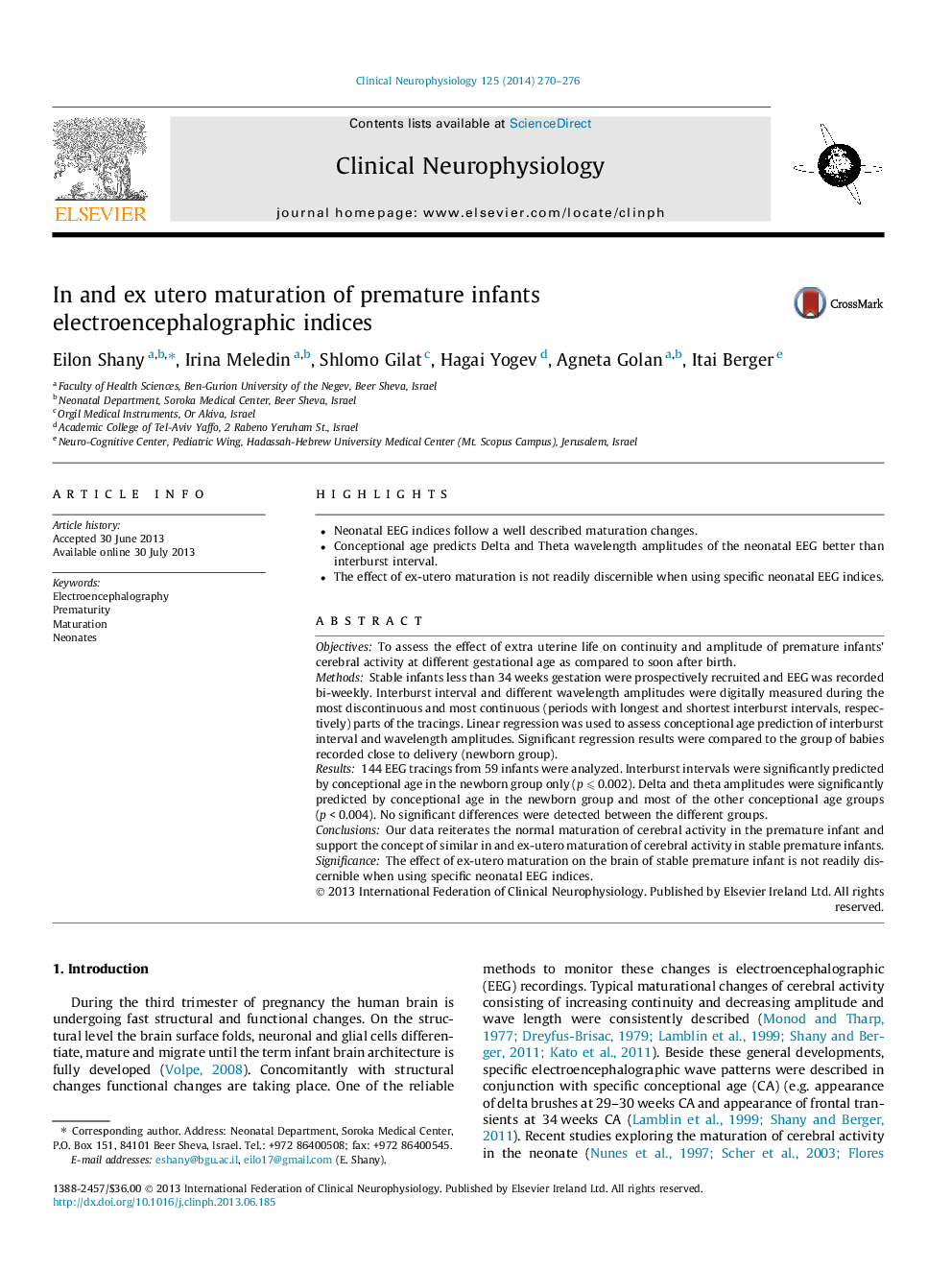| Article ID | Journal | Published Year | Pages | File Type |
|---|---|---|---|---|
| 3044395 | Clinical Neurophysiology | 2014 | 7 Pages |
•Neonatal EEG indices follow a well described maturation changes.•Conceptional age predicts Delta and Theta wavelength amplitudes of the neonatal EEG better than interburst interval.•The effect of ex-utero maturation is not readily discernible when using specific neonatal EEG indices.
ObjectivesTo assess the effect of extra uterine life on continuity and amplitude of premature infants’ cerebral activity at different gestational age as compared to soon after birth.MethodsStable infants less than 34 weeks gestation were prospectively recruited and EEG was recorded bi-weekly. Interburst interval and different wavelength amplitudes were digitally measured during the most discontinuous and most continuous (periods with longest and shortest interburst intervals, respectively) parts of the tracings. Linear regression was used to assess conceptional age prediction of interburst interval and wavelength amplitudes. Significant regression results were compared to the group of babies recorded close to delivery (newborn group).Results144 EEG tracings from 59 infants were analyzed. Interburst intervals were significantly predicted by conceptional age in the newborn group only (p ⩽ 0.002). Delta and theta amplitudes were significantly predicted by conceptional age in the newborn group and most of the other conceptional age groups (p < 0.004). No significant differences were detected between the different groups.ConclusionsOur data reiterates the normal maturation of cerebral activity in the premature infant and support the concept of similar in and ex-utero maturation of cerebral activity in stable premature infants.SignificanceThe effect of ex-utero maturation on the brain of stable premature infant is not readily discernible when using specific neonatal EEG indices.
